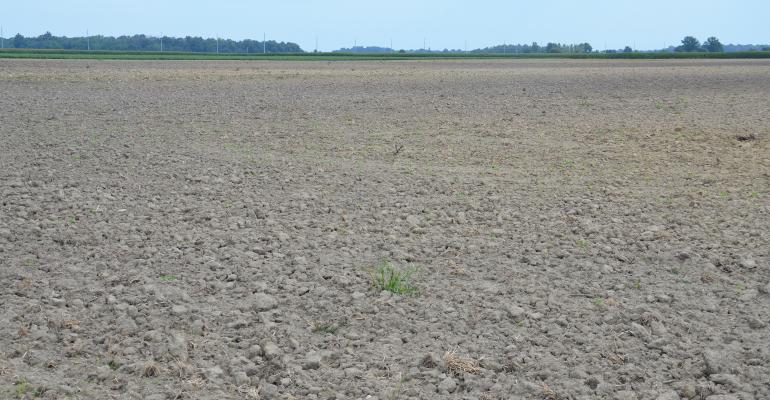What you should know about fallow syndrome

Soybean Pest Beat: Fallow syndrome may be a bigger issue for corn, but if you have prevented planting acres, consider it.
Oct 02, 2019
I’ve read about “fallow syndrome.” I have 200 acres that didn’t get planted. I haven’t done anything but mow weeds off. Is fallow syndrome real? Is it more about insect and disease pressure, or something else? Can I do anything about it now?
The panel of Indiana certified crop advisers answering this question includes Betsy Bower, Ceres Solutions, Terre Haute; Traci Bultemeier, Corteva/Pioneer, Fort Wayne; and Dan Ritter, Dairyland Seed, Wabash.
Bower: Fallow syndrome is a result of a population reduction of vesicular arbuscular mycorrhizae, or VAM, fungi in the soil due to no plants growing the previous year. Fields most susceptible include prevent plant acres kept free of weeds by tillage or the use of crop protection products. Fields kept weed-free by mowing are less susceptible to fallow syndrome since there was a growing weed root for much of the summer.
Grass crops like wheat, corn and grain sorghum are particularly susceptible to fallow syndrome, as they form a symbiotic relationship with mycorrhizae fungi. Grass crops leak sugars from roots that support the mycorrhizae fungi, and the mycorrhizae fungi assist roots in taking up nutrients, primarily phosphorus and zinc.
Soybeans are far less dependent on the mycorrhizae fungi and so are much less susceptible to fallow syndrome. In fact, one suggestion is planting soybeans as late as you can in a prevent plant situation to prevent fallow syndrome in corn the following year.
Fallow syndrome will result in stunted corn and wheat plants that may purple, indicating phosphorus deficiency even when phosphorus is adequate in the soil. The corn or wheat is hungry for phosphorus because the mycorrhizae are critical to helping phosphorus and zinc uptake. Cool, wet growing conditions can make the situation worse.
Bultemeier: Fallow syndrome is real and refers to loss of mycorrhizal fungi which need host plant roots to survive. This can be a big deal in fields planted to beans or corn in 2020 because it will likely show itself as a phosphorus deficiency in the plant. It can be particularly more of a problem in coarse-textured soils, cool planting conditions and soils already low in phosphorus.
Planting a cover crop that contains oats, cereal rye or some legumes that serve as host plants will help keep your mycorrhizal fungi population high and functioning until corn or soybeans can be planted.
Ritter: Most discussions on “fallow syndrome” seem related to corn. Soybeans don’t seem to be as susceptible to fallow syndrome. Yes, it’s real and deals more with soil microorganisms than insect and disease pressure. During fallow or zero vegetation situations, there aren’t enough roots of the right type for certain mycorrhizae to coexist, and they die out. These mycorrhizae assist with nutrient uptake, specifically phosphorus and zinc.
Oddly enough, certain weeds may have helped sustain this population. However, for obvious reasons, using weeds may not be a wise choice. Planting a cover such as cereal rye, wheat or oats may help sustain mycorrhizae. One may also apply additional phosphorus and highly consider using a starter or pop-up fertilizer next spring with phosphorus and zinc to aid the corn plant.

